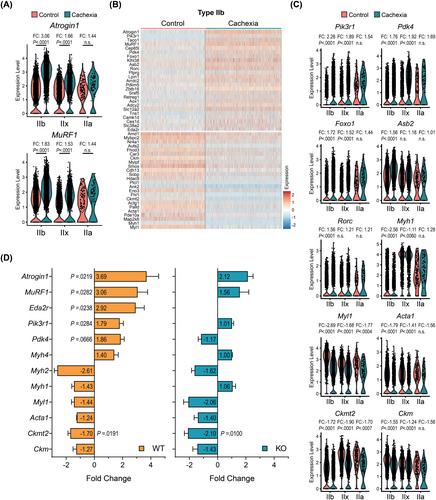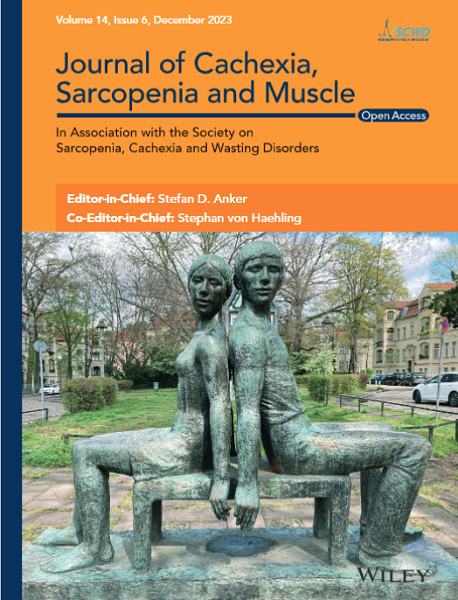Tumour-induced alterations in single-nucleus transcriptome of atrophying muscles indicate enhanced protein degradation and reduced oxidative metabolism
Abstract
Background
Tumour-induced skeletal muscle wasting in the context of cancer cachexia is a condition with profound implications for patient survival. The loss of muscle mass is a significant clinical obstacle and is linked to reduced tolerance to chemotherapy and increased frailty. Understanding the molecular mechanisms driving muscle atrophy is crucial for the design of new therapeutics.
Methods
Lewis lung carcinoma tumours were utilized to induce cachexia and muscle atrophy in mice. Single-nucleus libraries of the tibialis anterior (TA) muscle from tumour-bearing mice and their non-tumour-bearing controls were constructed using 10X Genomics applications following the manufacturer's guidelines. RNA sequencing results were analysed with Cell Ranger software and the Seurat R package. Oxygen consumption of mitochondria isolated from TA muscle was measured using an Oroboros O2k-FluoRespirometer. Mouse primary myotubes were treated with a recombinant ectodysplasin A2 (EDA-A2) protein to activate EDA-A2 receptor (EDA2R) signalling and study changes in gene expression and oxygen consumption.
Results
Tumour-bearing mice were sacrificed while exhibiting moderate cachexia. Average TA muscle weight was reduced by 11% (P = 0.0207) in these mice. A total of 12 335 nuclei, comprising 6422 nuclei from the control group and 5892 nuclei from atrophying muscles, were studied. The analysis of single-nucleus transcriptomes identified distinct myonuclear gene signatures and a shift towards type IIb myonuclei. Muscle atrophy-related genes, including Atrogin1, MuRF1 and Eda2r, were upregulated in these myonuclei, emphasizing their crucial roles in muscle wasting. Gene set enrichment analysis demonstrated that EDA2R activation and tumour inoculation led to similar expression patterns in muscle cells, including the stimulation of nuclear factor-kappa B, Janus kinase–signal transducer and activator of transcription and transforming growth factor-beta pathways and the suppression of myogenesis and oxidative phosphorylation. Muscle oxidative metabolism was suppressed by both tumours and EDA2R activation.
Conclusions
This study identified tumour-induced transcriptional changes in muscle tissue at single-nucleus resolution and highlighted the negative impact of tumours on oxidative metabolism. These findings contribute to a deeper understanding of the molecular mechanisms underlying muscle wasting.


 求助内容:
求助内容: 应助结果提醒方式:
应助结果提醒方式:


